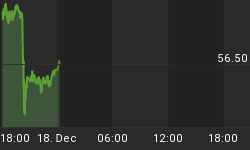Following is an excerpt from Pivotal Events published October 7, 2004 by InstitutionalAdvisors.
INTEREST RATES
The Bond Future: The September 30 "Investors and traders could continue lightening positions into rallies." was appropriate. But considering that the slump into the usual seasonal strength into the turn-of-the-month removed one opportunity, we will be a little more forceful on the next rally.
The price decline to 110^29 was in opposition to the jump in stock and industrial commodity markets, which suggests that we could get a rally as these roll over, probably noticeable by late next week.
Yield Curve: Two weeks ago, we began looking for a reversal from flattening with the boom to steepening, which would anticipate the start of the recession.
Because of its long historical record, we measure the treasury curve from the 30-year to the 3-month. Investors and traders usually run it from the longs to the 2-year.
As we run it, the curve flattened, in its party mode, to 308 bps on September 22, from which it has steepened to 330 bps. No big deal yet, but a test of the low and an advance beyond 335 bps would set a trend worth noticing, particularly if it is due to short rates declining.
Credit Spreads: The bellwether 10-year swap spread is working on a trend change. It narrowed to 36.5 bps in March, from which it widened to 54.5 bps on May 10.
Then with the party that developed in base metal and energy prices, this spread narrowed to 40.75 bps on September 22. This has since widened to 45 bps and, as with the curve, needs a test of the recent low to set the next trend.
Dollar Index: Bearishness seems to be as intense as it was back in January when the low was 84.5. That was accompanied by a severe downside capitulation on the ChartWorks proprietary model. That was the fourth such reading. This compared with the crash low on the stock market in October, 2002, which registered the third such "capitulation".
Our view has been that the fourth such reading could set up a long but gradual recovery on the dollar index. Given the gales of bearishness, both official and common, we would have to conclude that, at 88.5, the dollar is climbing a wall of worry.
The Canadian Dollar has been propelled lately by gales of bullishness. While going with the flow, we have been looking for some topping action that would be accompanied by a reversal in the U.S. yield curve, spread widening, and the rollover in commodities.
Investors could begin to convert Canadian to U.S. funds and perhaps the process could be called "dollar cost averaging". Be that as it may, quite likely we could soon get a "sell" for more aggressive positioning.















